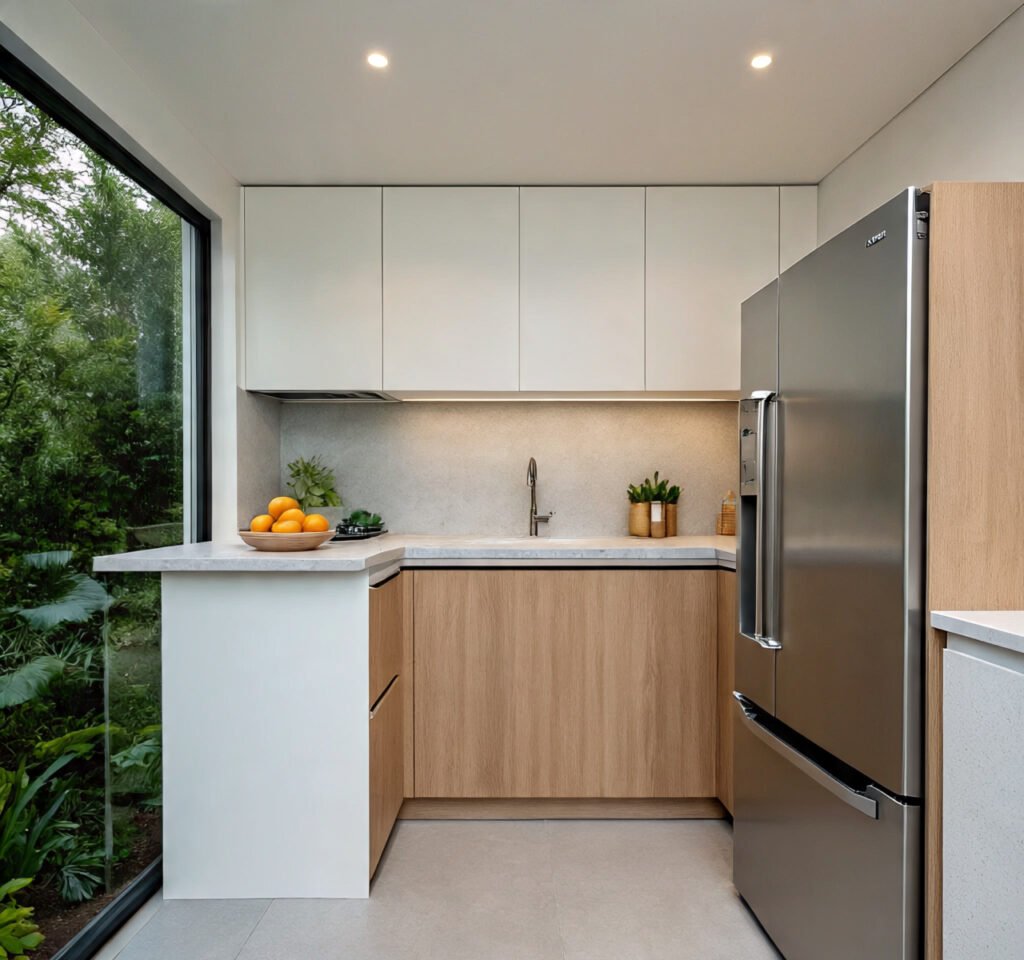
The kitchen has long been considered the heart of the home, and in today’s world, it is also a place where sustainability begins. As homeowners increasingly prioritize eco-friendly living, remodeling projects are shifting toward designs that minimize environmental impact while maximizing functionality, efficiency, and style. A sustainable kitchen is no longer just a trend-it is a lifestyle choice that improves home value, reduces long-term costs, and supports a healthier planet.
This blog explores innovative and practical eco-friendly kitchen remodeling ideas that align with modern sustainability goals. From material choices to appliances, lighting, and waste reduction strategies, here is a comprehensive guide to creating a sustainable kitchen that doesn’t compromise on beauty or usability.
1. Choosing Sustainable Materials for Cabinets and Countertops
One of the most significant aspects of a kitchen remodel is the selection of materials. Traditional cabinets and countertops are often made with non-renewable resources and toxic finishes. Instead, eco-conscious homeowners can opt for:
- Bamboo or reclaimed wood cabinets: Fast-growing and renewable, bamboo is an excellent alternative to hardwood. Reclaimed wood adds character while reducing demand for virgin timber.
- Recycled glass or composite countertops: These materials provide durability and style while reducing landfill waste.
- Low-VOC finishes and paints: Volatile organic compounds (VOCs) release harmful chemicals into indoor air. Choosing low-VOC or VOC-free paints improves indoor air quality.
2. Energy-Efficient Appliances
Appliances account for a large portion of a kitchen’s energy use. Replacing outdated models with energy-efficient alternatives reduces utility bills and environmental footprint.
- ENERGY STAR-rated refrigerators, dishwashers, and ovens: These consume significantly less electricity and water.
- Induction cooktops: More energy-efficient than gas or electric stoves, induction cooktops heat only the pan, reducing wasted energy.
- Smart appliances: Wi-Fi-enabled ovens, fridges, and dishwashers can optimize energy use and alert homeowners to maintenance needs.
3. Water-Saving Fixtures and Systems
Kitchens consume substantial amounts of water, from washing dishes to cooking. Installing water-saving solutions ensures sustainability without sacrificing convenience.
- Low-flow faucets and aerators: Reduce water usage by up to 30%.
- Hands-free faucets: Minimize waste by shutting off automatically when not in use.
- Greywater recycling systems: Advanced remodels can incorporate water recycling to reuse sink water for non-drinking purposes.
4. Lighting for Efficiency and Ambiance
Lighting design impacts both sustainability and aesthetics. Switching from traditional incandescent bulbs to energy-efficient alternatives offers immediate benefits.
- LED lighting: Uses up to 80% less energy and lasts longer than incandescent bulbs.
- Task lighting: Focuses illumination on work areas, reducing the need for overall high-wattage lighting.
- Smart lighting systems: Allow homeowners to adjust brightness and schedule lighting for maximum efficiency.
5. Flooring Options with Sustainability in Mind
Flooring is often overlooked but plays a critical role in sustainable remodeling.
- Cork flooring: Renewable, resilient, and naturally antimicrobial.
- Linoleum: Made from natural materials such as linseed oil and jute, it’s biodegradable and durable.
- Recycled tile or reclaimed wood: Adds character while keeping materials out of landfills.
6. Improving Indoor Air Quality
A truly eco-friendly kitchen must also prioritize the health of its occupants. Many conventional building materials and appliances release toxins into the air.
- Ventilation systems with energy recovery: Ensure fresh air circulation while minimizing energy loss.
- Non-toxic adhesives and sealants: Prevent harmful emissions.
- Indoor plants: Natural air purifiers that add beauty and freshness to the kitchen space.
7. Waste Reduction Strategies in Kitchen Design
A sustainable kitchen remodel also considers how waste is managed.
- Built-in recycling and compost stations: Encourage waste segregation and reduce landfill contribution.
- Pull-out bins: Keep waste organized and accessible without compromising on aesthetics.
- Smart food storage: Designing pantries and refrigerators that reduce food spoilage supports waste minimization.
8. Renewable Energy Integration
Forward-thinking homeowners are integrating renewable energy into their kitchen remodels.
- Solar panels: Reduce reliance on fossil fuels by powering kitchen appliances.
- Solar water heaters: Provide an eco-friendly alternative for hot water usage in the kitchen.
- Battery storage systems: Allow excess solar energy to be stored for evening use.
9. Sustainable Kitchen Layouts
The design layout itself plays a role in energy efficiency and sustainability.
- Efficient work triangle: Minimizes wasted steps and energy during cooking.
- Open layouts: Allow for better natural lighting and ventilation, reducing reliance on artificial systems.
- Flexible designs: Modular cabinetry and adaptable spaces extend kitchen lifespan, reducing the need for frequent remodels.
10. The Long-Term Benefits of an Eco-Friendly Kitchen
Investing in a sustainable kitchen remodel is not only about reducing environmental impact—it also adds significant long-term benefits:
- Increased property value: Eco-conscious buyers actively seek homes with sustainable upgrades.
- Lower utility bills: Energy- and water-efficient designs pay for themselves over time.
- Healthier home environment: Non-toxic finishes and better ventilation improve well-being.
- Contribution to climate action: Every sustainable choice helps reduce carbon footprint.
Conclusion
An eco-friendly kitchen remodel combines style, functionality, and responsibility. From material choices and water-saving fixtures to energy-efficient appliances and waste reduction strategies, every element contributes to a healthier home and planet. By making thoughtful decisions, homeowners not only save money in the long run but also create a kitchen that reflects modern values of sustainability, comfort, and forward-thinking design.
In 2025 and beyond, eco-friendly kitchens are not just an upgrade-they are the future of home improvement.